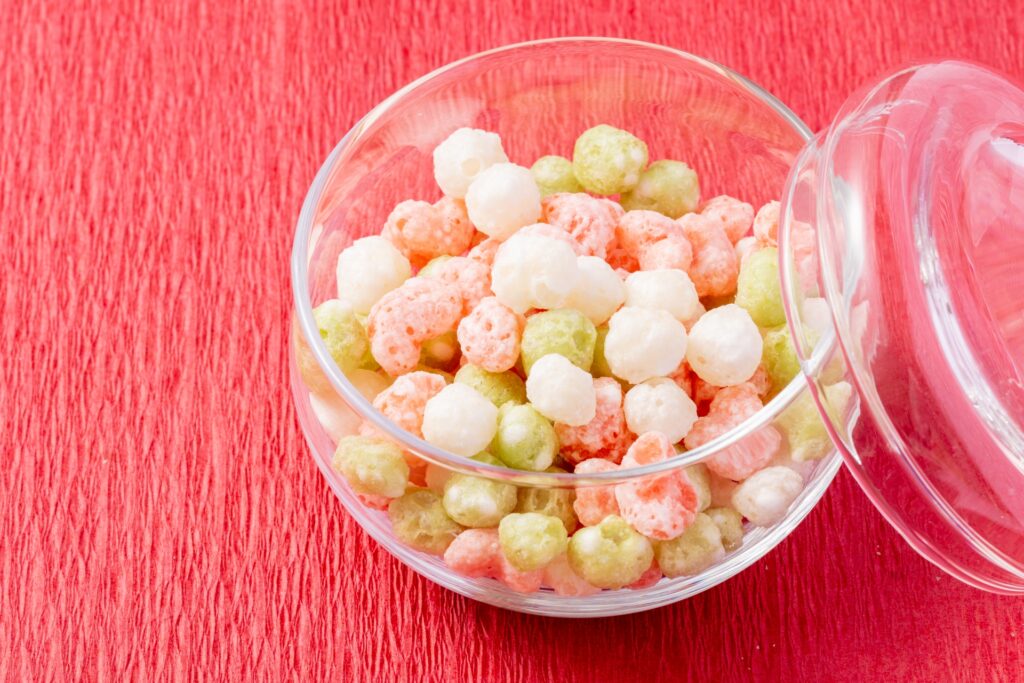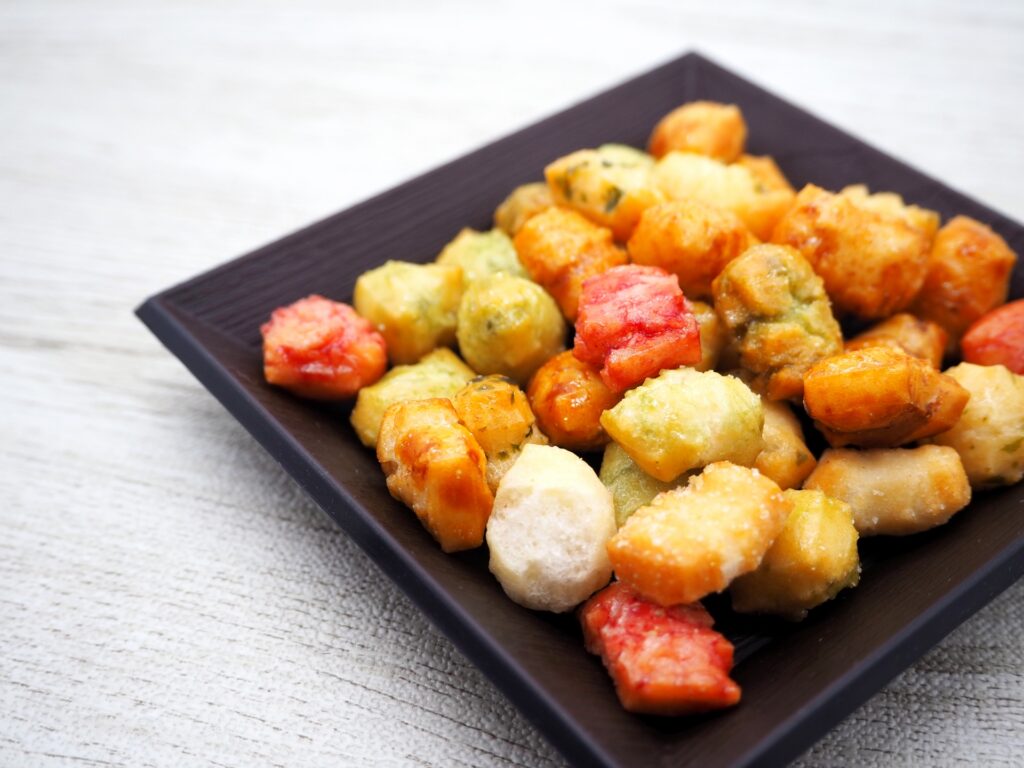

Every year on March 3rd, Japan celebrates one of its five seasonal festivals: Hinamatsuri. It is connected to Shinto (Japan’s major religion alongside Buddhism), and prays for the healthy growth, prosperity and happiness of girls (especially those under 10 years old). The festival (also a national holiday) comes with its own rites and rituals, such as placing traditional Japanese hina dolls on a multi-tiered platform, as well as enjoying certain foods and snacks. One such snack is hina-arare, which are sweet, multi-colored, bite-sized rice crackers.
Dating back at least several centuries, hina-arare are made from coating sugar on puffed rice. This sweet recipe is most common in the Kanto region (Tokyo, Yokohama, etc.), whereas in Kansai (Kyoto, Osaka, etc.), hina-arare takes a more savory spin, flavored with soy sauce and salt, or even shrimp and aonori (seaweed) seasonings.
Possibly the most distinct aspect of hina-arare are their adorable pastel colors. A pack of four colors (pink, green, yellow, and white) symbolizes each season, and thus, represents the hope that the girls will find happiness every day, all throughout the year. You can also find variations with only three colors, which encompass the energies of life to help the girls grow healthily: pink or red = resilience (blood), green = longevity (trees), and white = snow-capped landscape (purity).
Hina-arare are easy to find in supermarkets across the country, especially when nearing March 3rd. So next time you find yourself in the snack aisle, why not see if you can find them? Or better yet…why not try making them at home?
